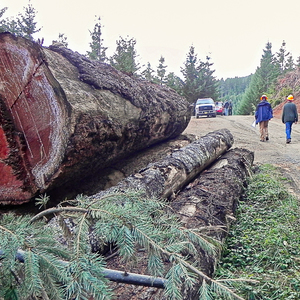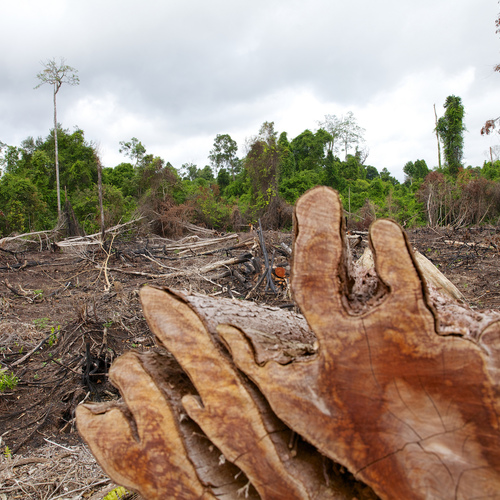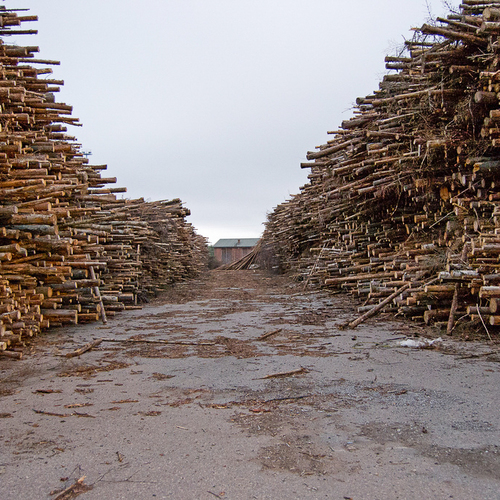
The Forest Stewardship Council (FSC) and four environmental advocacy groups in the Pacific Northwest have launched a promotional campaign for forest practices and wood products that help lower carbon emissions.
The Climate-Smart Wood Group says it wants to help builders, architects, and other buyers understand the difference between wood products on the market and make it easier to locate lumber that meets sustainable forestry standards.
In a statement laying out its goals, the group said that growing interest in mass-timber construction underscores the need to choose wood products carefully. Promoters often cite timber as a less carbon-intensive building product than concrete and steel, the group notes, but that’s not necessarily the case.
“All wood is not the same,” the statement says. “Forest management affects carbon storage, human communities, water, and habitat. Climate-smart forestry—which relies on actions such as selective harvesting, longer rotation lengths, and tight restrictions on hazardous chemicals—can store more carbon than commonly practiced forestry.”
Although not without its critics, the FSC manages an international certification program for lumber. In order to qualify and win the right to mark wood with the FSC stamp, forestry companies have to meet certain FSC tests that are designed to minimize damage to the environment and communities where the wood is harvested.
Other groups involved in the Climate-Smart program are Ecotrust, Sustainable Northwest, the Northwest Natural Resource Group, and the Washington Environmental Council. These organizations all are in the Pacific Northwest.
The group notes that in the pulp and paper industry, large companies have influenced forest management and supply chains through their purchasing policies. But the construction sector is not as organized, with many smaller players working independently. The Climate-Smart Wood Group is a way to bring these players together, its opening statement said.
For now, the Climate-Smart Wood Group is using a part of the FSC website as the point of contact for people who are interested in buying wood products. As the program evolves, that’s likely to change.
What are climate-smart forests?
At its website, Ecotrust says that the guidelines for FSC’s certification are among the best examples of climate-smart forestry. They encourage longer growing rotations for trees, limit harvest sizes to no more than 40 acres, and tightly restrict the use of chemicals.
The group said a study it carried out with the University of Washington compared Douglas-fir forests that were managed in compliance with forest-practices laws in Oregon and Washington to forests managed with key FSC requirements in mind.
“We quantified the outcomes of these different forest-management approaches on 64 properties spanning western Oregon and Washington for a 100-year period,” Ecotrust said, “And here’s what we found: FSC scenarios always stored more carbon than business-as-usual approaches. We would produce more timber and store more carbon if we allowed trees to grow for a longer time before harvesting them.”
But the study also found that market changes would have to take place before those forestry practices could expand. Letting trees grow longer before harvest and protecting woodland habitat “comes at a cost to forest owners,” the group said. “Conservation isn’t free.”
Paying landowners $37 per extra ton of C02 they stored, or adding a 10% premium on timber they sold, would make FSC management practices as financially attractive as “business-as-usual” forestry.
The FSC already maintains a searchable database of certified products for builders who want to use them. It allows buyers to search for certified lumber and other products by region and species.
Well-managed forests serve many purposes
The new climate-smart group was launched at a mass-timber conference in Portland, Oregon, in March. One of the reasons for that timing is the buzz in the Pacific Northwest that mass-timber construction is generating, said Brad Kahn, communications director for the U.S. arm of the FSC.
Formation of the new group has been under discussion for some time. Although the FSC’s current partners all are in that region, the effort is aimed at users all over the U.S. and Canada, Kahn said, and the organization has enough reach to help builders and designers source wood just about anywhere.
In addition to boosting the profile of FSC-certified wood and explaining the benefits of well-managed woodlands, the group also is hoping to promote the use of wood taken in what it calls “restoration projects.” As Kahn explained, this would include trees thinned from overgrown woodlots and trees threatened or damaged by insects.
Lumber produced from this stream is on a much smaller scale than the international FSC labeling and chain-of-custody system, Kahn said, and the Climate-Smart Wood Group is unlikely to develop a wholly new labeling system for it. For now, Kahn said, it’s a “very custom, one-off choice” that involves a limited number of producers and a much more informal supply chain.
Kahn hopes the group can do more than connect buyers and sellers of wood products by educating people about the value of forests.
“We want to connect with people who are interested in building through a climate lens, but we also want people to remember that forests are more than just stacks of carbon,” Kahn said. “There’s a lot of ecosystem service and other public benefits that come from forests. We want to remind people that, yes, we need to address climate change, but we want to do it in such a way that maintains the integrity of our forests. Clear-cutting our forests and using wood in the name of climate is a bit short-sighted.”
Weekly Newsletter
Get building science and energy efficiency advice, plus special offers, in your inbox.















3 Comments
Petting the peeves...
Does any body parse English logically anymore?
“All wood is not the same,” ...
....doesn't have the same meaning as (what was probably intended)...
... "Not all wood is the same,".
Clearly some wood IS the same, so the assertion “All wood is not the same,” is false, whereas "Not all wood is the same," can still be true even when some wood is the same.
The (ab)use of language degrades clarity and meaning.
OK, I'm over it now. :-)
lol
Dana, need a hug?
Log in or create an account to post a comment.
Sign up Log in